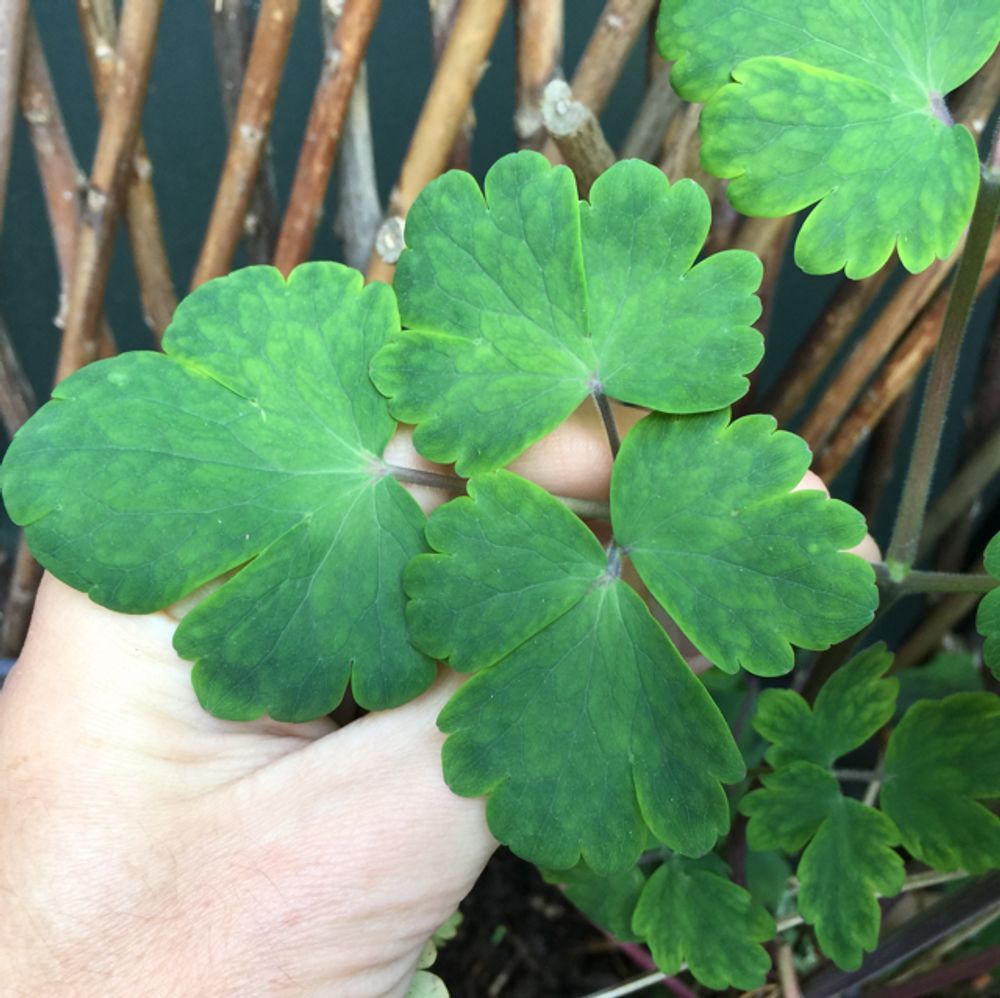Columbine
(Aquilegia)

Description
Aquilegia (common names: granny's bonnet, columbine) is a genus of about 60–70 species of perennial plants that are found in meadows, woodlands, and at higher altitudes throughout the Northern Hemisphere, known for the spurred petals of their flowers. The leaves of this plant are compound and the flowers contain five sepals, five petals and five pistils. The fruit is a follicle which holds many seeds and is formed at the end of the pistils. Underneath the flower are spurs which contain nectar, mainly consumed by long-beaked birds such as hummingbirds. They are used as food plants by some Lepidoptera (butterfly and moth) caterpillars. These are mainly of noctuid moths – noted for feeding on many poisonous plants without harm – such as Cabbage Moth (Mamestra brassicae), Dot Moth (Melanchra persicariae) and Mouse Moth (Amphipyra tragopoginis). The Engrailed (Ectropis crepuscularia), a geometer moth, also uses columbine as a larval foodplant. The larvae of the Papaipema leucostigma feed on columbine. Plants in the genus Aquilegia are a major food source for Bombus hortorum, a species of bumblebee. Specifically, they have been found to forage on species of Aquilegia vulgaris in Belgium and Aquilegia chrysantha in North America and Belgium. The bees do not show any preference in color of the flowers. The flowers of various species of columbine were consumed in moderation by Native Americans as a condiment with other fresh greens, and are reported to be very sweet, and safe if consumed in small quantities. The plant's seeds and roots are highly poisonous however, and contain cardiogenic toxins which cause both severe gastroenteritis and heart palpitations if consumed as food. Native Americans used very small amounts of Aquilegia root as a treatment for ulcers. However, the medical use of this plant is better avoided due to its high toxicity; columbine poisonings may be fatal. An acute toxicity test in mice has demonstrated that ethanol extract mixed with isocytisoside, the main flavonoid compound from the leaves and stems of Aquilegia vulgaris, can be classified as non-toxic, since a dose of 3000 mg/kg did not cause mortality.
Taxonomic tree:







